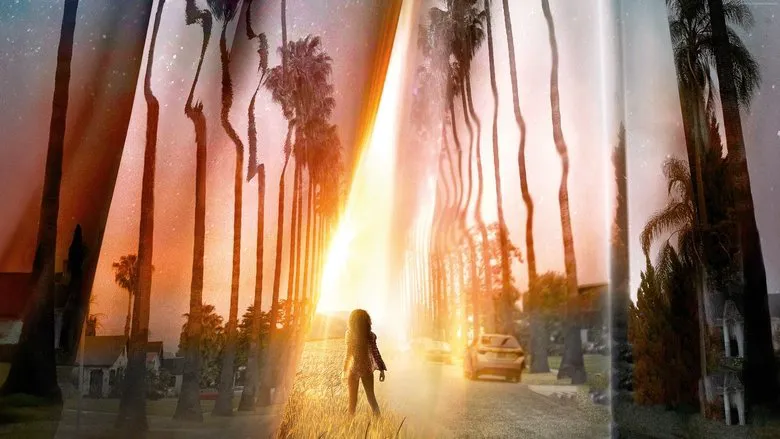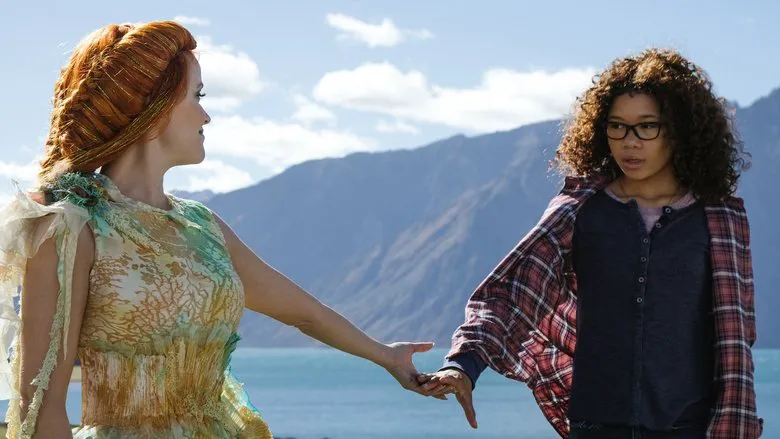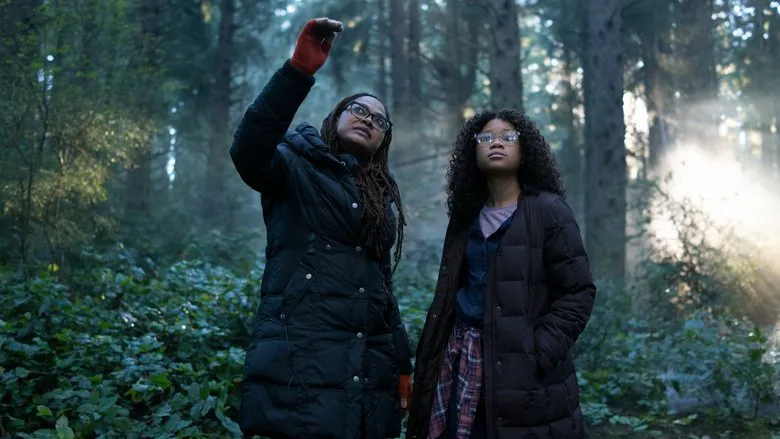A Wrinkle in Time: When Disney Magic Fails to Ignite
Disney’s legacy in the entertainment world is undeniable, built on a bedrock of captivating storytelling and groundbreaking animation. With a formidable financial stronghold, the studio possesses the unique privilege of being able to experiment, even if it occasionally results in a stumble. Throughout its storied history, Disney has, every few years, ventured outside its comfort zone, releasing ambitious projects that, despite their significant potential and massive budgets, simply fail to connect with audiences or achieve the anticipated box office success. Films like “John Carter,” “The Lone Ranger,” and “Tomorrowland” serve as stark reminders of these lofty yet ultimately unfulfilled ambitions. Fortunately, the sheer scale of Disney’s operations provides a significant safety net, cushioning the impact of such missteps and ensuring that the spirit of creative risk-taking can persist, even in the wake of potential flops. An example of a similar big-budget fantasy from Disney’s past might immediately spring to mind.
However, the recently released fantasy adventure-drama, “A Wrinkle in Time,” regrettably falls into this category, but on a far more severe scale. It can only be described as a comprehensive cinematic disappointment. From its fundamental script to its directorial execution and the performances of its ensemble cast, the film consistently underwhelms. The characteristic wonder and emotional resonance typically associated with Disney properties are conspicuously absent. What audiences are instead delivered is an ungainly amalgamation: attempting to marry the vibrant superheroics of “The Avengers” with overly simplistic themes suitable for preschoolers, the complex scientific and philosophical underpinnings of C.S. Lewis’s “Narnia” via a rudimentary physics textbook, and the visual absurdity of classic B-movies like “Attack of the 50 Foot Woman.” This awkward blend leaves viewers with little more than a pervasive sense of disenchantment. The film’s earnest but misguided attempt to resonate universally ultimately results in it connecting with virtually no one. Character motivations remain frustratingly poorly defined, their emotional struggles fail to elicit any genuine empathy, and the sheer overabundance of digital effects often serves only to overwhelm the senses, prompting a desire to disengage rather than immerse.

The Plot: A Disjointed Cosmic Journey
The narrative centers on the Murry family, whose lives are irrevocably altered by the sudden disappearance of Dr. Alex Murry, a NASA scientist dedicated to pioneering instant space travel. His unexpected vanishing leaves his discerning wife, his intellectually brilliant yet socially insecure daughter Meg, and his remarkably precocious young son Charles Wallace behind. Four years later, the emotional toll of their father’s absence has profoundly transformed Meg, turning her from a once cheerful and popular student into a withdrawn, bitter, and increasingly isolated child struggling to navigate the complexities of adolescence. Harbouring a deep-seated hope of one day reuniting with her father, Meg’s world is turned upside down by the unexpected arrival of three enigmatic celestial beings: the wise Mrs. Who, the whimsical Mrs. Whatsit, and the commanding Mrs. Which. These mysterious women appear to possess profound knowledge of Dr. Murry’s whereabouts and the grand cosmic forces at play. Alongside her intuitive younger brother and a perceptive new friend, Calvin, Meg embarks on an inherently perilous interstellar journey, beginning with a visit to the ethereal planet Uriel. It is here that Dr. Murry’s increasingly dangerous trail leads, revealing that he has fallen prey to the malevolent influence of a dark, abstract force known only as “IT” – a universal evil threatening to engulf the entire cosmos in its shadow.
Script and Direction: Lost in a Labyrinth of Laziness
The screenplay, an adaptation of Madeleine L’Engle’s beloved and highly acclaimed children’s novel, is plagued by a litany of fundamental flaws. It suffers from noticeable plot holes that strain credulity, glaring inconsistencies in its unfolding narrative, and an over-reliance on convenient plot devices that feel less like organic storytelling and more like expedient shortcuts. Characters seemingly materialize out of thin air, such as the fleeting appearances of roles played by Zach Galifianakis and Michael Peña, only to vanish just as abruptly. Similarly, the three central “fairy” figures, intended to guide the journey, often serve a purely functional, almost robotic role without truly developing as engaging personalities. The film, disconcertingly, often feels less like a cohesive narrative and more like a loosely connected series of scenes, stitched together without a compelling internal logic or emotional through-line. Why, one might ask, invest time in genuine character development, crafting nuanced motivations or overcoming obstacles, when a magical tesseract can conveniently transport characters across vast distances and through time, sidestepping any need for actual effort or narrative ingenuity? This magical bypass regrettably functions as a cinematic crutch, allowing the filmmakers to evade the more challenging, but ultimately more rewarding, task of writing truly compelling characters with clear, relatable arcs and potent motivations.

Director Ava DuVernay, known for her powerful and evocative storytelling in previous works, inexplicably appears to overlook or be unable to overcome the inherent structural weaknesses and narrative shortcomings of the script. Her directorial choices here feel largely uninspired and consistently fail to genuinely engage the audience on an emotional or intellectual level. She dedicates an inordinate amount of screen time to ponderous setup, establishing the background narrative at a pace that is likely to bore younger viewers while testing the patience of adults. Subsequently, characters are moved through key plot points with a detached, almost mechanical efficiency, lacking any discernible sense of purpose or dynamic interaction. Surprisingly, for a fantasy epic, the film conspicuously lacks a compelling or well-defined antagonist. The role of evil is instead personified by an abstract, formless black mass, complete with unsettling red tendrils and a booming, disembodied voice. It remains profoundly unclear who exactly the filmmakers intended to impress with this vague portrayal of cosmic menace; it certainly fails to resonate with or genuinely threaten its primary target audience.
Acting: A Galactic Misalignment
The calibre of acting within “A Wrinkle in Time” is, regrettably, as disappointing as its narrative and direction. While a certain degree of leniency and understanding can be extended to the young actors who are still honing their craft, even their performances often register as unpleasant and largely unconvincing, struggling to convey the emotional depth required of their roles. Unfortunately, the established adult stars fare no better, frequently exacerbating the film’s troubles rather than elevating it. Reese Witherspoon’s portrayal of Mrs. Whatsit, for example, is jarringly exaggerated, veering into a caricature that feels notably out of place and proves off-putting even for her dedicated fans. Mindy Kaling, cast as the enigmatic Mrs. Who, feels like an egregious miscasting choice, her performance failing to capture the ethereal wisdom or peculiar charm of the character as envisioned in the source material. Perhaps most surprisingly, Oprah Winfrey’s highly anticipated portrayal of Mrs. Which is shockingly ineffective, leaving a lasting impression of a character that is anything but the wise, enchanting, and commanding figure she was meant to embody. Regrettably, it seems that almost no element of “A Wrinkle in Time” truly coalesces or works in harmony.

Final Verdict: A Time to Forget
In its final reckoning, the film’s already brief 100-minute runtime paradoxically feels considerably longer than it actually is, a testament to its inability to maintain engagement. Any potentially poignant or inspiring message about the paramount importance of family bonds, the enduring triumph of love over darkness, or the inherent beauty and strength found in embracing individuality and difference, is unfortunately lost within the muddled and disjointed narrative. The only truly lasting impression left upon the viewer is a profound sense of wasted time and unrealized potential. Without question, Disney has severely stumbled with this particular cinematic offering, presenting a film that struggles to find its footing or its audience.
Nevertheless, as in any good fairy tale, a brighter and more promising cinematic future undoubtedly awaits. The studio’s extensive repertoire is still brimming with an abundance of exciting stories yet to be told and bold, imaginative ideas to explore. Despite this particular misstep, Disney’s unwavering passion for creative innovation and willingness to experiment are deeply ingrained aspects of its identity, and this passion is fundamentally unlikely to dissipate. The legacy of Disney magic, even when it intermittently fails to sparkle brightly, holds the promise of future enchantment.
